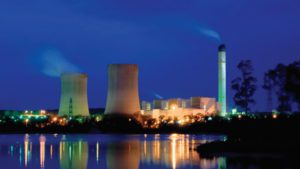
Solar will rival coal as the biggest single source of electricity in Queensland by 2030, under the main scenarios outlined by the state’s expert panel in a draft report on its 50 per cent renewable energy target.
According to the principal scenarios outlined in the report, the state will feature 4,900MW of rooftop solar by 2030 (up from just over 1,500MW) now and will have some 5,200MW of large-scale solar PV as well.
This will take the state to 10,100MW of solar capacity. The forecasts do not include solar thermal technologies, such as solar towers with storage, although panel members say this is possible if costs come down.
The report says that solar will account for most of the 14,100MW capacity needed to provide the 30,000GWh of electricity needed to meet the state’s 50 per cent target by 2030, and the bulk of the new capacity when Queensland “goes it alone” after the federal target expires.
The rooftop solar forecasts are based on projections from the Australian Energy Market Operator, which the panel appears to understand is below some other commercial market forecasts.

It notes that if battery storage costs were to reduce faster than forecast – and its modelling only assumes 6-7 per cent a year – then the assumptions for rooftop solar could change significantly.
In particular, the panel thinks that the market for industrial and commercial solar is vastly untapped. These operations coincide with the output of solar.
It also suggests that the government install more solar on its own buildings, and also hints at changes in voltage regulation – to conform to international standards – that could allow for far greater uptake of rooftop solar on the grid, and alleviate supply concerns in congested areas.
For large-scale solar, the panel’s predictions may prove conservative, at least in the short term. It predicts wind to take the lion’s share of capacity in the next five years, and only around 500MW of large-scale solar will built between now and 2020.
This would include the 245MW of large-scale solar that is being partially funded by ARENA and already committed, and other plants that intend to go merchant and sell output on the spot market, including Eco Energy’s planned 140MW solar farm in central Queensland.
The linear pathway predicts a fairly even build out between 2020 and 2030, although the ramp scenario recommends a slower start and faster finish to take advantage of falling technology costs.
In any case, rooftop solar will account for just under 12 per cent of the state’s electricity demand by 2030 under these scenarios, and possibly more. Large-scale solar will account for closer to 20 per cent, putting the combined output of solar at around one third of all demand.
At that level it will start to challenge coal as the biggest source of generation in the state.










